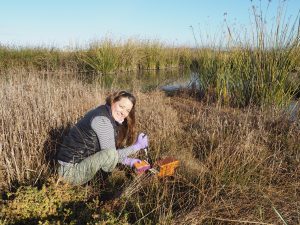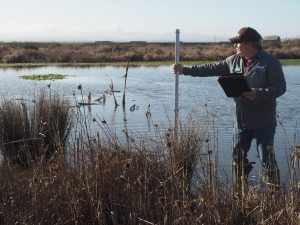This project will demonstrate the effectiveness of farm runoff treatment systems in reducing nutrient discharges to coastal waterways and provide a blue print for scaling-up water quality treatment systems within the agricultural watersheds of the Monterey Bay. We will also examine the potential link between agricultural nutrient discharges and the growth of off shore harmful algal blooms (HABs). This link will be examined through laboratory-based studies of physiological response to specific nutrient discharges and by observing effects from nutrient loading on blooms in Monterey Bay.
This new award supports an exciting partnership between the Central Coast Wetlands Group focused on water quality enhancement through constructed wetlands and bioreactor systems to reduce agricultural nutrient run-off, and the Environmental Biotechnology Lab’s focus on expanding the long-standing harmful algae monitoring datasets and detection capabilities. Specific goals include: 1) Expanding current watershed monitoring systems to document progress towards meeting State water quality objectives; 2) Documenting the primary nitrogen constituents and threshold concentrations needed to initiate a HAB response; 3) Estimating the scale of nutrient removal needed to reduce HAB impacts to Monterey Bay; 4) Developing recommendations for appropriate nutrient management practices (type, distribution and scale) needed to minimize near shore HAB response and determine the appropriate sub-watershed locations to implement these measures; 5) Working with industry, coastal resource managers and state agency staff to encourage the adoption and implementation of recommended nutrient management practices; and 6) Integration of findings into regional watershed plans, regulations, and presentations to industry stakeholders.



